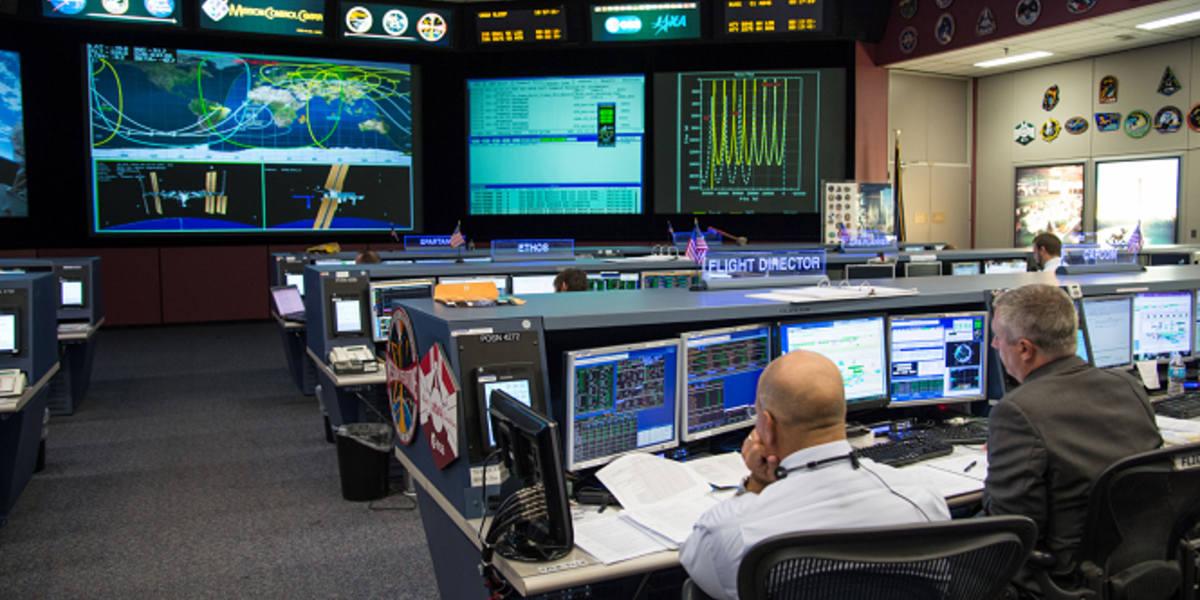Save Energy and Protect Against Outages with No Upfront Cost? NASA Says Yes, Please.
Let's Save Energy
Alliance to Save Energy's Blog
Save Energy and Protect Against Outages with No Upfront Cost? NASA Says Yes, Please.

If astronauts at the International Space Station call in to say “Houston, we have a problem,” the last thing they want to hear is silence on the other end.
NASA’s Lyndon B. Johnson Space Center (JSC) in Houston, Texas, is home to Mission Control for the International Space Station. With this responsibility comes a need for secure, uninterrupted access to energy so constant communication can be sustained with astronauts in orbit.
Over the last few years, NASA has taken major steps to increase the reliability and resilience of its energy systems to meet its mission goals, even in the event of a power outage – and reduce its energy costs at the same time. The work at JSC is a noteworthy example of how government agencies, the largest consumers of energy in the country, can save energy and taxpayer dollars through performance contracts.
In 2015, JSC awarded an energy savings performance contract (ESPC) to Energy Systems Group to build a combined heat and power (CHP) plant on the site. Celebrated with a ribbon cutting in May of 2018, the CHP plant was officially opened and began to supply nearly 70 percent of JSC’s electricity needs, all its steam requirements, and about half of its chilled water requirements.
JSC previously utilized other ESPCs to install more efficient lighting, air-conditioning, and water systems, resulting in an estimated $43 million in savings over the life of the project. The most recent project is NASA’s largest ESPC yet.
In addition to the $47 million ESPC awarded to Energy Systems Group in 2015, JSC received a $1 million AFFECT grant from the Department of Energy to prepare materials and evaluate contracts for the CHP plant prior to awarding the ESPC. These investments are expected to yield savings of $141 million over the plant’s operating period.
An ESPC is a partnership between an agency and an energy service company (ESCO). ESCOs can be particularly effective at systems-level energy efficiency projects and projects that consider interactions between facilities and the electric grid. They implement upgrades – generally with no upfront costs – paid for by the energy savings.
NASA’s mission-focused efficiency gains have reduced JSC’s energy intensity by more than half since 2014. The CHP plant produces 11.9 megawatts of electricity via two 5.7-megawatt combustion turbines and a 500-kilowatt steam turbine. Because CHP systems use heat energy that would otherwise go to waste, the system at JSC avoids about 20,000 metric tons of carbon dioxide emissions each year – the equivalent of removing almost 4,500 vehicles from the road – by reducing the need for power supplied from the grid.
The onsite electricity generation from the CHP plant boosts JSC’s reliability and resilience, allowing the facility to operate in the event of a major power outage by guaranteeing access to continuous energy. And the efficiency improvements in the facility mean it needs less total energy, extending the length of time JSC could operate as an islanding microgrid separate from the power grid.
This ESPC is critical to NASA’s Mission Control at the Johnson Space Center because in this case, “failure is not an option.”
RECENT BLOG POSTS
STAY EMPOWERED
Help the Alliance advocate for policies to use energy more efficiently – supporting job creation, reduced emissions, and lower costs. Contact your member of Congress.
Energy efficiency is smart, nonpartisan, and practical. So are we. Our strength comes from an unparalleled group of Alliance Associates working collaboratively under the Alliance umbrella to pave the way for energy efficiency gains.
The power of efficiency is in your hands. Supporting the Alliance means supporting a vision for using energy more productively to achieve economic growth, a cleaner environment, and greater energy security, affordability, and reliability.



